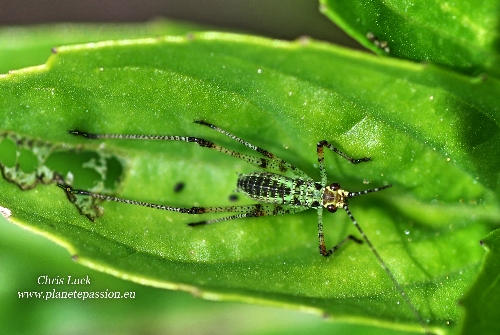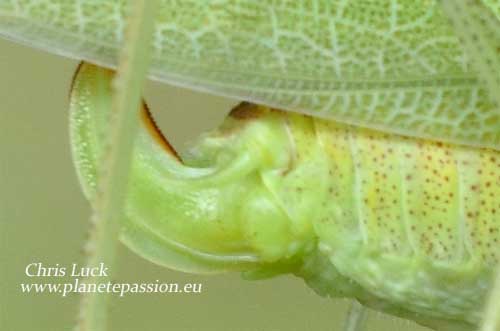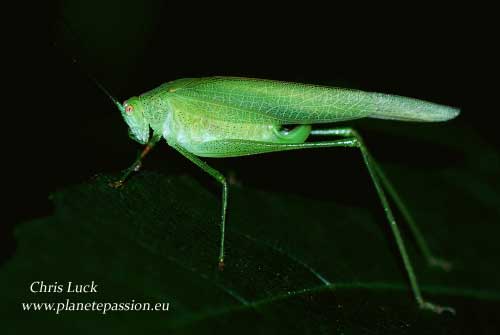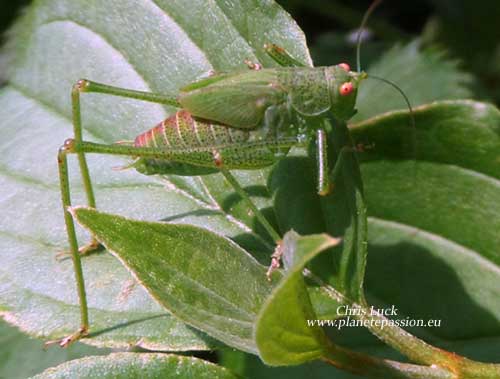




Southern sickle-bearing bush cricket
Phaneroptera nana
Phanéroptère méridional
(Mediterranean Katydid or 4 spot Bush Cricket)
This Bush Cricket closely resembles the neighbouring species, Phaneroptera falcata . In both species the wings, extend beyond the body. It is slightly smaller than the latter with a body length of 13 to 15 mm for both sexes. Its coloration is slightly more yellowish, its body is dotted with small rusty spots. They have very long rear legs that are frequently extended out flat behind them. Females have a wide and angled ovipositor which allows her to deposit her eggs in the vegetation. Eggs in this species are extraordinarily flat because they are laid directly between the upper and lower epidermal layer of flat plant material such as broad leaves or flower petals. The female has to bend her abdomen through nearly 360° so that the tip of the ovipositor is near the mandibles and touching the edge of the leaf. At the same time she chews an opening and slides in the top half of the ovipositor to deliver her eggs.

Above - Females angled ovipositor.

Above - female at dusk
They have a higher temperature requirement than Phaneroptera falcate which tends to be more common in the north of France although it is a species that is increasingly extending its range northwards with climate change.


Above - different stages of devlopment
Adult are normally to be seen from August until October. Mainly active at night they are often barely audible to the human ear but can usually be seen fairly easily in the daytime on vegetation. Females of this species also respond to males by stridulating.
They are a vegetarian species that frequents open spaces, woodland clearings, gardens and hedgerows.
Mainly in the southern half of France extending to somewhat north of the Loire river.